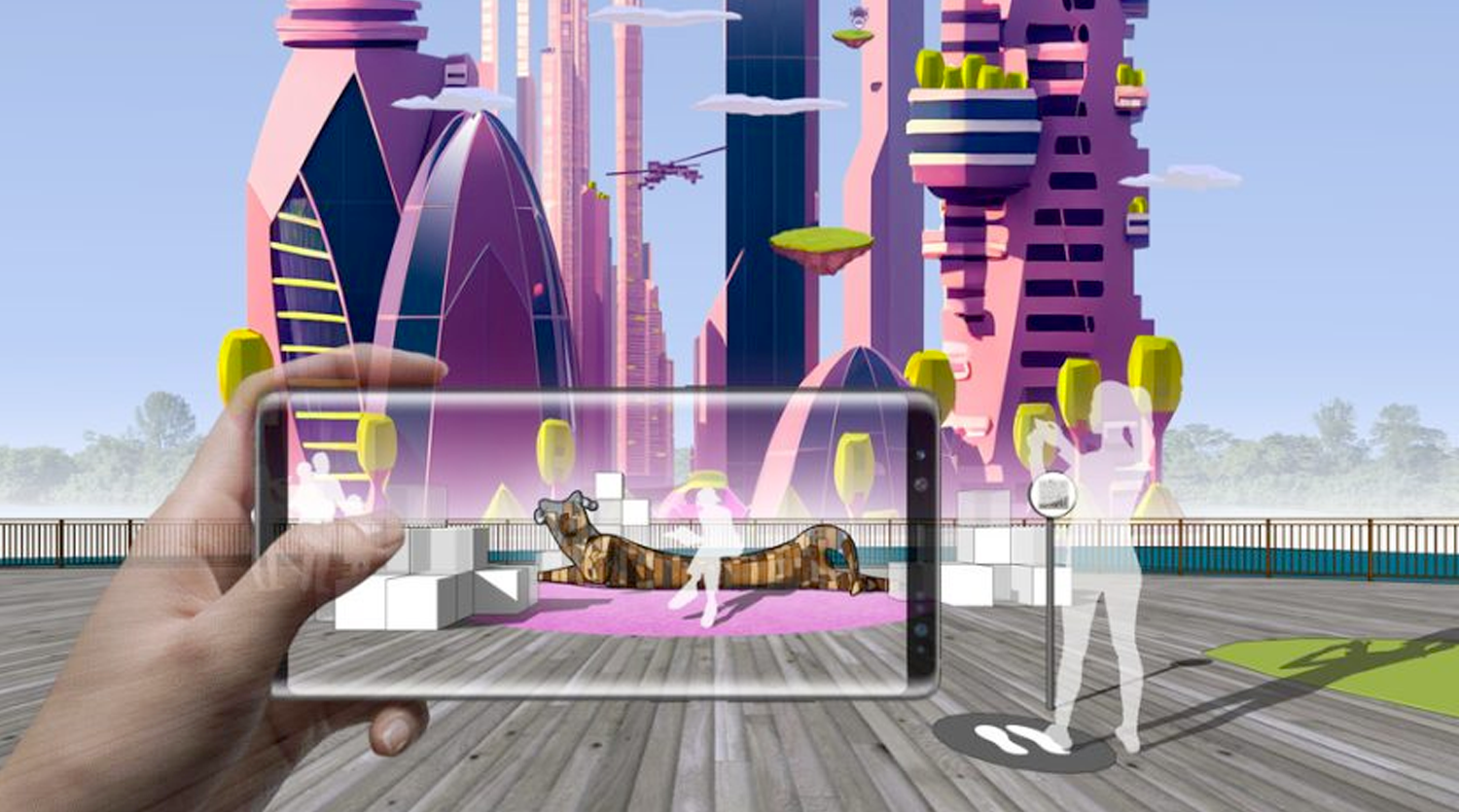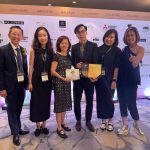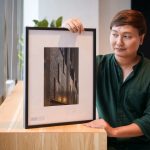8 August 2023
RSP is proud to share that our design entry titled, ‘How Now Brown Cow?’ for the PLAY@Punggol design competition has been awarded a special Commendation Prize for all 3 locations.
The Jury complimented this submission set of 3 locations for its innovation and creativity in telling the Punggol story, especially with the proposed use of Augmented Reality (AR) to create dynamic experiences for visitors. The jury was inspired that the proposal could enhance the live, work and play experiences of Punggol.
How Now Brown Cow? (Commendation – all 3 locations)
By RSP Architects & Engineers Pte Ltd
Team: Mark Wong, Kristine Tagaban, Lai Yann Ting, Madeni Jais
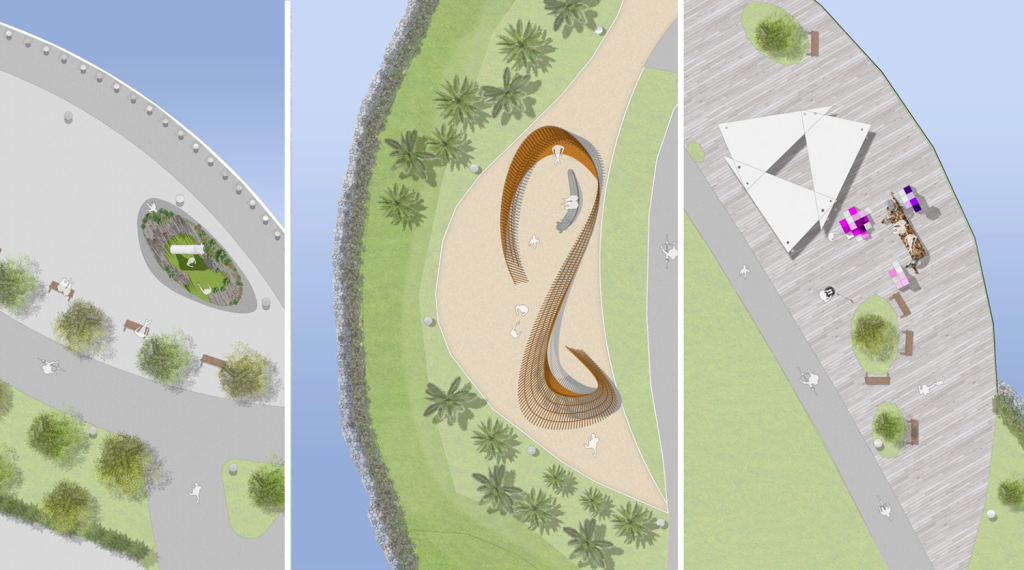
‘How Now Brown Cow?’ is a series of public art installations that aim to foster community engagement and promote place-making in Punggol through the practice of folklore. Each using recycled timber in their materiality, the 3 installations are unique and present a historical vignette of Punggol, but together they form a cohesive narrative that tracks the evolution of Punggol.
The team began the conceptualisation by looking at Punggol’s history against Singapore’s development, trying to identify particular moments, stories or people in Punggol’s history that can be its defining timestamps. They realised that while Punggol’s history likely traces back beyond colonial records, it is still a new town whose origin story will largely be written by its residents today. This seems to be a meaningful story to convey that the everyday Punggol dweller is actively building the region’s identities and mythologies.
“We imagined creating ‘historical’ vignettes of the Punggol story that can somehow come alive and be rewritten through residents’ active interactions to the pieces in both the physical and digital realms. Through the installations in each location, we hope that people can use these open-ended spaces to create new meaning and understand their neighbourhood stories as they and the Punggol area continue to evolve over time.” Shared Mark Wong, the RSP team lead for this project.
Location 1 – The Fields

Situated in front of the bustling Waterway Point, this location is designed as an interactive and eye-catching immersive art installation, as well as a mini community garden that residents can contribute to. The installation speaks to the early days of Punggol when it was a fishing and farming settlement and hinges on working with earth and plants in its interactivity.
Location 2 – The Watering Hole
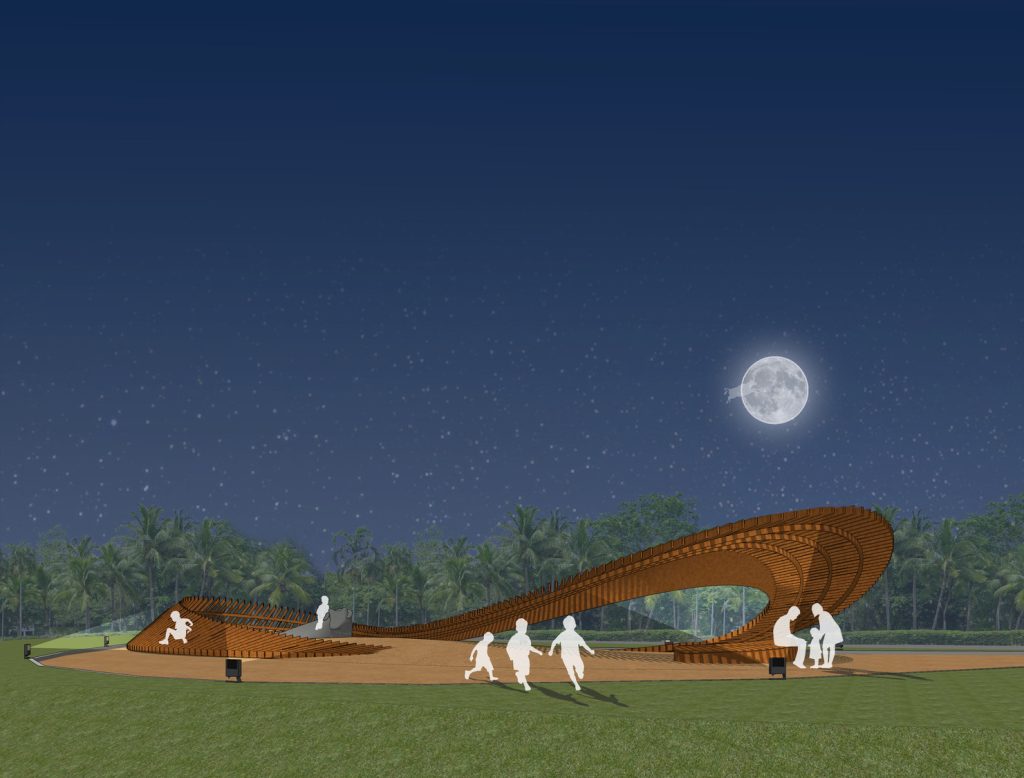
To cater to the young families who frequent this site and leverage the tranquil landscape of its surroundings, this installation is envisaged as a gentle playscape and nature observatory all integrated into the existing sandpit. The installation speaks to the 1990s-2010s when Punggol was first turned into “a waterfront town of the 21st century” and focusses on tactile play.
Location 3 – The Punggopolis
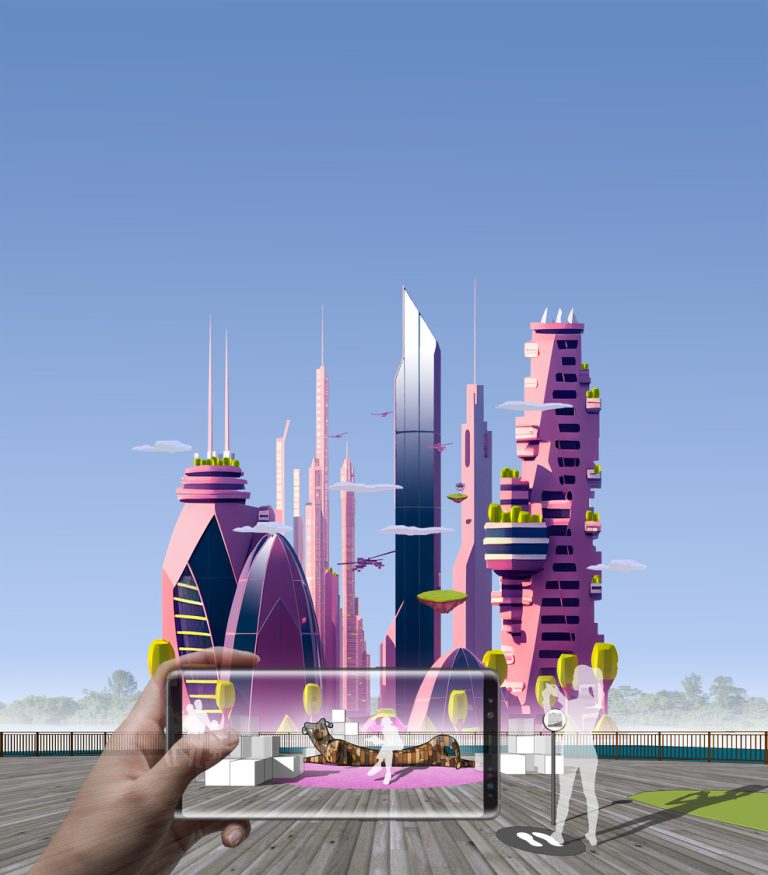
Located along a quiet cycling path, this installation is imagined as an interactive sculpture that is accompanied by an Augmented Reality (AR) environment to produce an immersive and captivating digital experience. This installation speaks to the future of Punggol Digital District opposite the site and allows for interacting with the virtual through technology.
What inspired their design for the RSP team?
We spoke to Mark Wong, Kristine Tagaban, Lai Yann Ting and Madeni Jais to find out more.

What compelled you to take part in the competition?
As a home-grown global practice with nearly 70 years of building alongside Singapore, we are very interested in understanding and exploring the Singapore identities that unite us as a unique people but also sets us apart as local communities and individuals.
This preoccupation undergirds our work in the built environment and more fundamentally, in place-making–creating forms and spaces that relate not only to the intended users but also often, their extended environment and communities. Each project is an inquiry about a people, their identities, values, aspirations and histories, and how these elements are expressed and balanced through space, form and programming.
Unlike conventional architecture, Punggol Play is a much purer exercise that allows the propositions to manifest through many more possibilities than a building. This gives us a lot more creative breadth to contemplate and imagine how the Punggol stories can be expressed to engage meaningfully with its residents as well as the larger nation through very layered experiences, spanning the physical into the digital, and over time.
Tell us more about your winning idea. How did you get the inspiration? What was your process for conceptualising the idea?
We began the conceptualisation by looking at Punggol’s history against Singapore’s development, trying to identify particular moments, stories or people in Punggol’s history that can be its defining timestamps. We realised that while Punggol’s history likely traces back beyond colonial records, it is still a new town whose origin story will largely be written by its residents today. This seems to us to be a meaningful story to convey that the everyday Punggol dweller is actively building the region’s identities and mythologies.
We imagined creating live “historical” vignettes of the Punggol story that can somehow come alive and be rewritten through the residents’ active engagement. To avoid suggesting only particular sites or epochs were an open story, we knew the story had to be told through contemporising a past, a present and a future, fleshed out across all three sites without hierarchy. The participation of the residents is imagined across both the physical and digital, suggesting that the thesis goes to the heart of the residents and transcends form and space.
Standing in for the individual Punggol resident is a fellow figurehead resident whose involvement and participation in each vignette is based on the everyday life that people can easily relate to. This emphasise that the story of Punggol lies in the everyday stories of its people and their relations, rather than in dramatic events or heroics. Local histories and connections are important and no less meaningful.
How do you hope people will experience your installation and the spaces around it?
We hope that people will understand and use each site as an open-ended project that is within their control to grow and change over time and see that the story of Punggol is actually growing as well as changing with them. For example, once the Punggol Digital District begins to manifest with buildings across the river, diverging from our preconceived notions of its future, people will witness the authentic Punggol story as it unfolds – a lived reality, not a mere fabrication or someone else’s imagination. Each site has an open-endedness about it that allows the site to change or grow over time with use, providing a reason for repeat visits and opportunities to record photographically, its transformations and developments. In doing so, we collectively partake in the creation and recording of a shared local history.
Why is it important to activate public spaces around us? Why do you want to contribute towards this?
Even as the digital world expands, making the globe seemingly borderless and full of possibilities, we must recognise that people still primarily inhabit the physical realm. We possess real corporeal needs and rely on physical social networks for our survival. If Covid has taught us anything, in times of need, we depend on local networks to provide support and help, especially for the more vulnerable people in our midst.
People’s use of public space is an open social contract to coexist together amidst all their differences and similarities. It allows us to connect and form bonds with each other on an even plane. An active, vivid and sustainable public space does not speak so much to the aesthetics of a place, but instead, on equitable access, deep community ties and collective ownership of a place or home. However, we cannot expect people’s participation to occur in a vacuum. More often, our public spaces require a little nudge through urban design, programming, maintenance and renewal to get and keep the ball rolling. It is in everyone’s duty to build the home and community we need, and as custodians of the built environment, it is doubly our professional duty to catalyse this process whenever and wherever possible.
What is PLAY@Punggol design competition?
The PLAY@Punggol design competition was launched on 3 February 2023, inviting Singapore-based practising designers to design installations at three locations along Punggol Waterway, to help create more interesting and memorable public spaces. The competition is organised by Urban Redevelopment Authority (URA), supported by National Parks Board (NParks) and JTC Corporation, with the Singapore Institute of Architects (SIA) as the appointed Promoter.
Share

